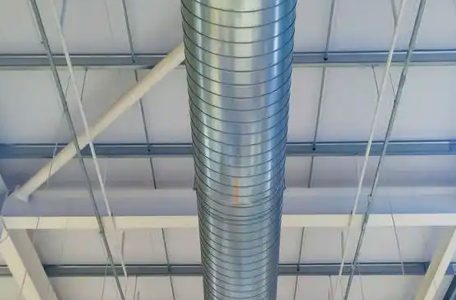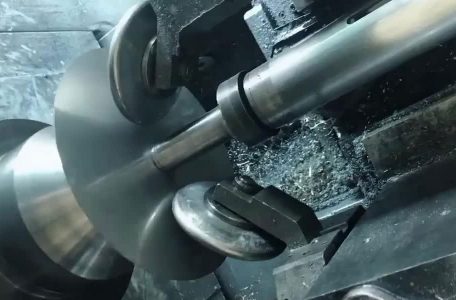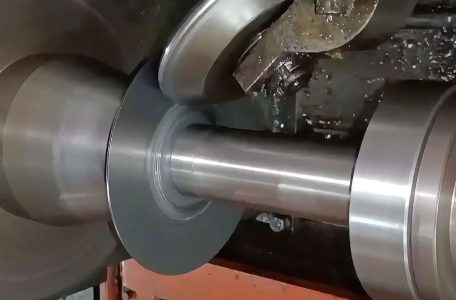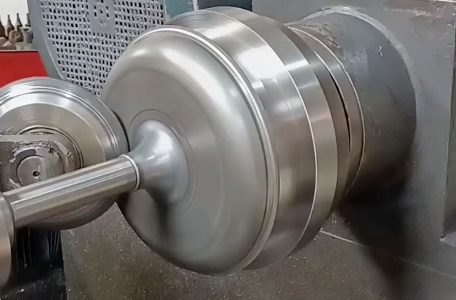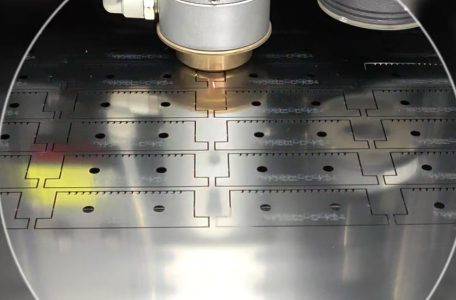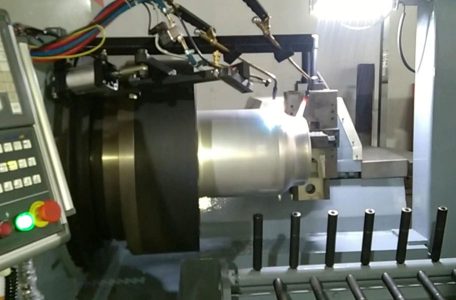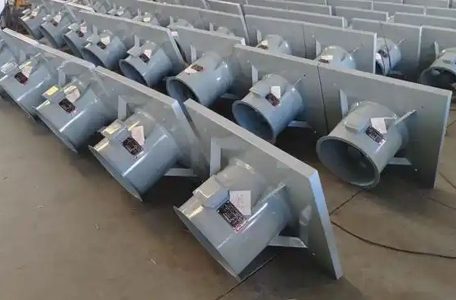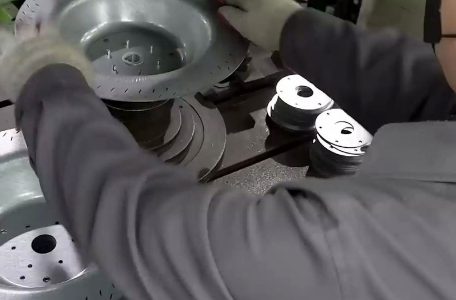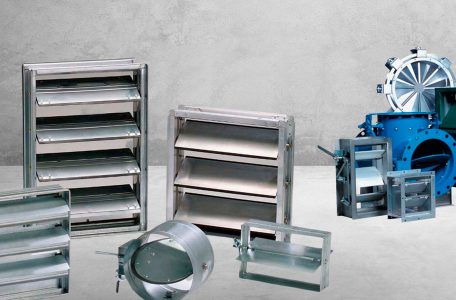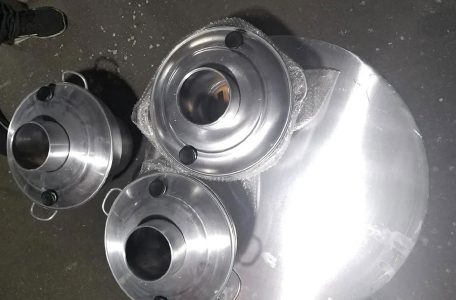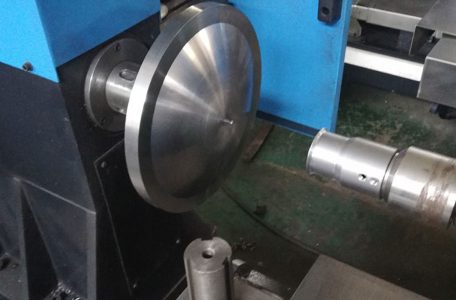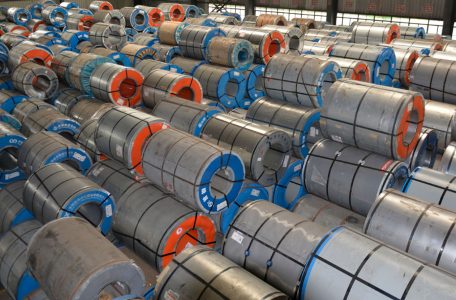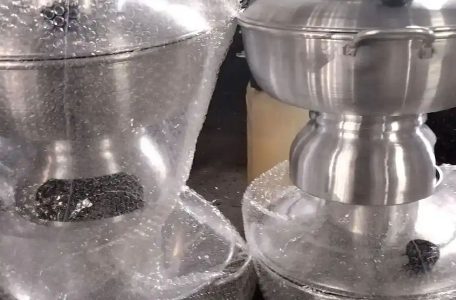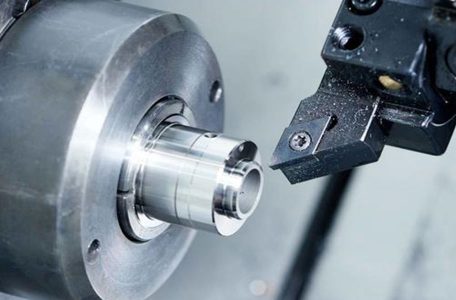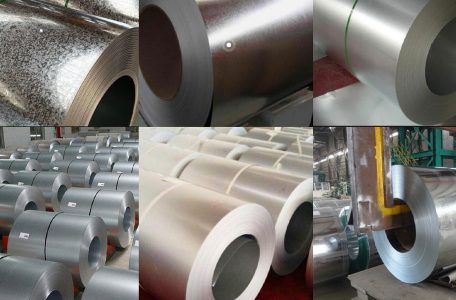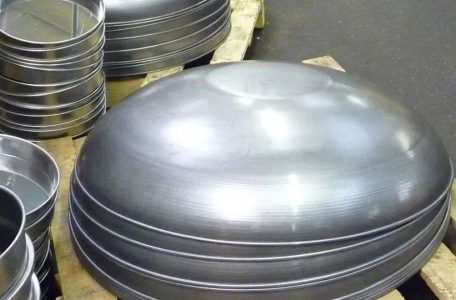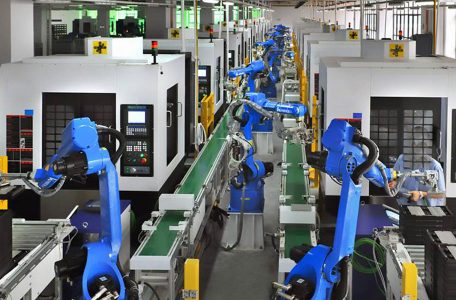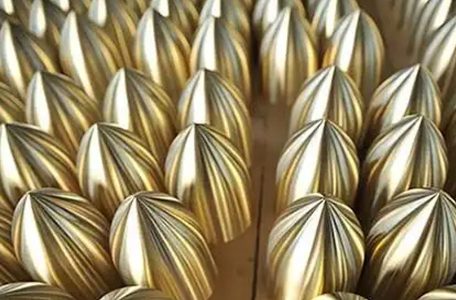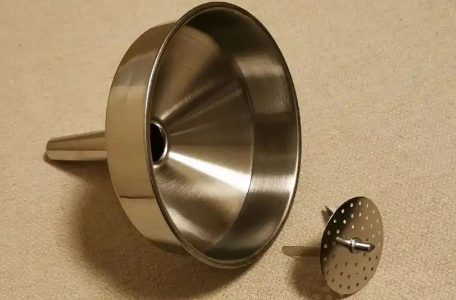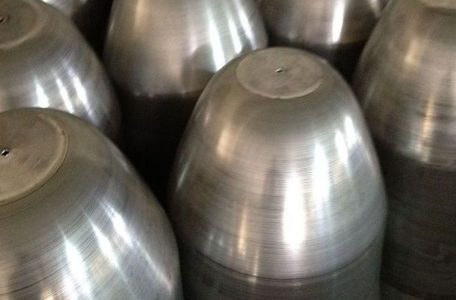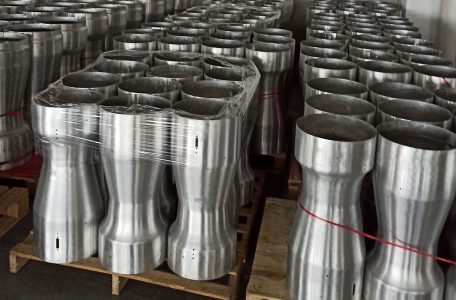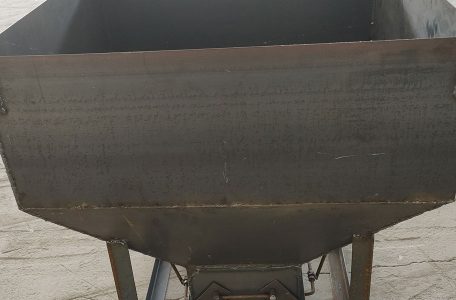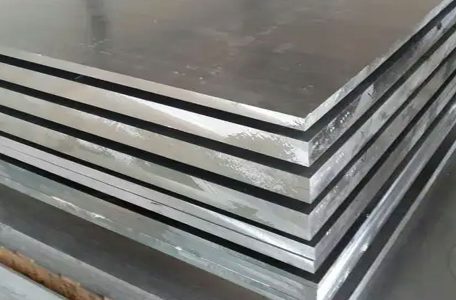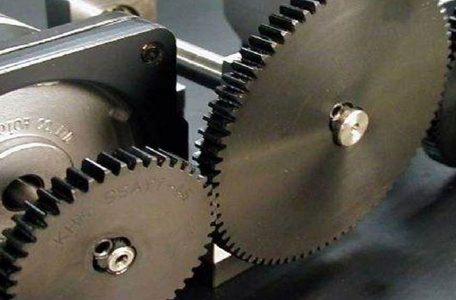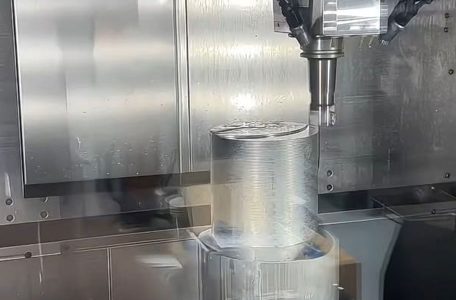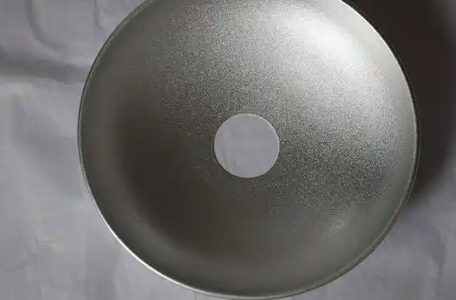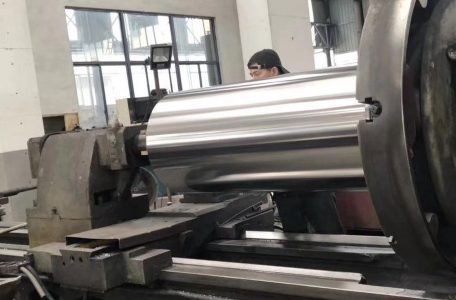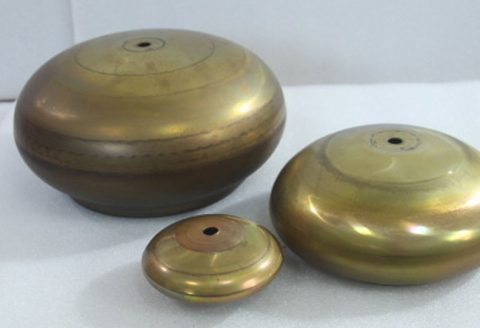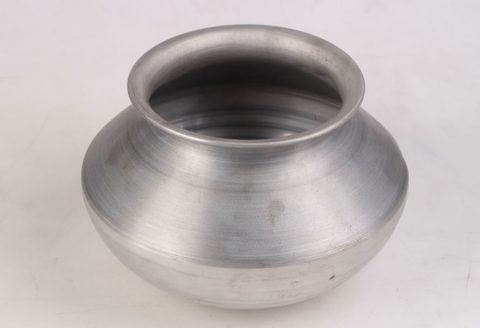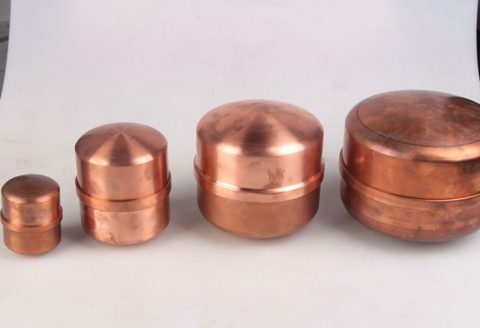Spinning forming technology, encompassing conventional spinning, shear spinning, and flow forming, represents a cornerstone of modern metalworking, particularly for the production of axisymmetric components. Over the past few decades, these techniques have matured significantly, driven by advancements in automation, material science, and computational modeling. Their application to high-performance materials—such as titanium alloys, aluminum alloys, magnesium alloys, nickel-based superalloys, and advanced composites—has expanded their relevance across industries like aerospace, automotive, defense, and energy. These materials, characterized by high strength-to-weight ratios, corrosion resistance, and thermal stability, pose unique challenges due to their complex deformation behaviors and limited formability at ambient temperatures. This article provides a comprehensive exploration of matured spinning forming technologies, their application to high-performance materials, and recent advancements, supported by Read more
Blog
Development of Metal Spinning Machines for Noncircular Shapes
Metal spinning, also known as spin forming or metal turning, is a metalworking process that transforms a flat metal disc or tube into axially symmetric components by rotating it at high speeds while applying localized pressure. This technique is widely used to produce shapes such as cones, cylinders, hemispheres, and hemi-ellipsoids, which are essential in industries like aerospace, automotive, and manufacturing. The mandrel-free metal spinning process, a modern advancement, eliminates the need for a solid mandrel, reducing tooling costs, lead times, and material usage while increasing flexibility in forming complex geometries. This article explores the mandrel-free metal spinning process specifically for forming hemispherical and hemi-ellipsoidal parts from low carbon steel sheets, delving into its principles, mechanics, process parameters, material behavior, Read more
Forming of Hemispherical and Hemi-Ellipsoidal Parts of Low Carbon Steel Sheet by Mandrel-Free Metal Spinning Process
Metal spinning, also known as spin forming or metal turning, is a metalworking process that transforms a flat metal disc or tube into axially symmetric components by rotating it at high speeds while applying localized pressure. This technique is widely used to produce shapes such as cones, cylinders, hemispheres, and hemi-ellipsoids, which are essential in industries like aerospace, automotive, and manufacturing. The mandrel-free metal spinning process, a modern advancement, eliminates the need for a solid mandrel, reducing tooling costs, lead times, and material usage while increasing flexibility in forming complex geometries. This article explores the mandrel-free metal spinning process specifically for forming hemispherical and hemi-ellipsoidal parts from low carbon steel sheets, delving into its principles, mechanics, process parameters, material behavior, Read more
Manufacturing of Gas Turbine Engine Parts via Metal Spinning
The manufacturing of gas turbine engine components is a highly specialized field within aerospace engineering, requiring precision, durability, and adherence to stringent performance standards. Among the various fabrication techniques employed, metal spinning stands out as a versatile and cost-effective process for producing rotationally symmetric parts, such as compressor housings, combustor liners, and turbine shrouds. Metal spinning, also known as spin forming or spinning, is a metalworking process that shapes a flat metal disc or tube into a desired geometry by rotating it at high speed and applying localized pressure with a tool. This article provides a comprehensive exploration of the metal spinning process as applied to gas turbine engine parts, covering its principles, materials, equipment, process parameters, advantages, limitations, and Read more
Laser-Assisted Metal Spinning for Efficient and Flexible Processing of Challenging Materials
Spin Machining (commonly referred to as metal spinning, spin forming, or spinning) is a metalworking process by which a disc or tube of metal is rotated at high speed and formed into an axially symmetric part. This technique, rooted in ancient craftsmanship and refined through modern engineering, leverages the principles of plastic deformation to shape materials without removing significant amounts of material, distinguishing it from subtractive manufacturing methods like milling or turning. Spinning machining is widely utilized in industries such as aerospace, automotive, and consumer goods manufacturing, producing components ranging from cookware to rocket nose cones. This article explores the history, principles, techniques, materials, equipment, applications, and comparative analyses of spin machining, providing a detailed scientific overview of the process. Read more
Ventilation Shell in Real Estate and Architecture
In the domains of real estate and architecture, the term “ventilation shell” is not a standard or widely recognized phrase within the conventional lexicon of building design or property development. However, for the purposes of this article, we interpret “ventilation shell” as a conceptual framework referring to the structural and systemic components of a building designed to facilitate ventilation, encompassing the building envelope, mechanical systems, and architectural features that collectively ensure adequate air exchange and quality. This interpretation aligns with the principles of indoor air quality management, energy efficiency, and occupant comfort, which are central to modern architectural practice. The ventilation shell, in this context, can be understood as the integrated assembly of elements that govern airflow, including walls, windows, Read more
Aluminum Drum Shell Fabrication: A Comprehensive Scientific Exploration
American Standard Heating, Ventilation, and Air Conditioning (HVAC) parts are integral components of one of the most recognized brands in the HVAC industry, known for producing reliable, energy-efficient, and durable systems for residential and light commercial applications. Founded in 1929 through the merger of the Standard Sanitary Manufacturing Company and the American Radiator Company, American Standard has evolved into a leading manufacturer of HVAC equipment, offering a wide range of parts that support air conditioners, heat pumps, furnaces, air handlers, and indoor air quality systems. This article explores the technical specifications, functionality, and comparative analysis of American Standard HVAC parts, emphasizing their role in modern climate control systems. Historical Context and Brand Evolution American Standard’s journey in the HVAC sector Read more
How to Spin Sheet Metal Bowls
Sheet metal spinning, also known as metal spinning or spin forming, is a metalworking process by which a flat metal disc or tube is rotated at high speed and formed into an axially symmetric part, such as a bowl, using a combination of rotational force and pressure applied via specialized tools. This technique, rooted in ancient craftsmanship yet refined through modern engineering, allows for the creation of seamless, durable, and aesthetically pleasing sheet metal bowls with applications ranging from industrial components to decorative household items. The process is distinct from other forming methods, such as deep drawing or stamping, due to its reliance on incremental deformation and its ability to produce complex geometries with minimal tooling costs. This article provides Read more
Deep Spinning Of Sheet Metals
Deep spinning of sheet metals is a highly specialized metal-forming process rooted in the broader domain of spin forming or metal spinning, a technique that has been employed for centuries to shape ductile metals into axially symmetric components. This process, often conducted on a lathe or a dedicated spinning machine, involves the incremental deformation of a flat metal sheet or blank into a desired three-dimensional geometry, typically using a combination of rotational motion and controlled pressure from a forming tool. Unlike conventional spinning, which is generally limited to shallow or moderately deep parts, deep spinning refers to the production of components with significant depth-to-diameter ratios, often exceeding 1:1, where the final shape requires substantial material flow and deformation. This article Read more
Robotic metal spinning is an advanced manufacturing process that integrates robotic systems with the traditional technique of metal spinning, a form of plastic deformation used to produce axially symmetric or non-axisymmetric metal components. Metal spinning, also known as spin forming or spinning, involves rotating a metal blank (typically a disc or tube) at high speed while applying localized pressure with a tool—historically a manual spoon or roller—to shape the material over a mandrel. The incorporation of robotics into this process enhances precision, repeatability, and flexibility, allowing for the production of complex geometries that were once limited by the skill of human artisans. This article explores the principles, history, technological advancements, applications, and scientific underpinnings of robotic metal spinning, with a Read more
Why Heat Up Metal Before Spinning
Metal spinning, a sophisticated and versatile metalworking process, involves the transformation of flat metal discs or tubes into axially symmetric components through the application of controlled force. This technique, often executed on a lathe or specialized spinning machine, relies on the ductility and malleability of the metal to achieve the desired shape. One critical aspect of this process that significantly influences its success is the decision to heat the metal prior to spinning. Heating metal before spinning enhances its workability, reduces mechanical stresses, and enables the production of complex geometries that would otherwise be unattainable under cold-working conditions. This article explores the scientific, metallurgical, and practical reasons for preheating metal in the spinning process, delving into the physics of deformation, Read more
CNC Turning of Oblique Ellipses
CNC (Computer Numerical Control) turning is a precision machining process that shapes a rotating workpiece using a stationary cutting tool. While CNC turning is commonly used to produce cylindrical parts, advanced techniques enable the creation of complex geometries, such as ellipses and, more specifically, oblique ellipses. An oblique ellipse, in this context, refers to an elliptical profile that is not aligned perpendicularly or parallel to the lathe’s rotational axis but is instead oriented at an angle, introducing unique challenges in machining. This article provides a comprehensive exploration of the methods, tools, programming strategies, and applications of CNC turning for oblique ellipses, emphasizing the technical intricacies, mathematical foundations, and practical considerations. The discussion is structured to offer a scientific and systematic Read more
Application of Spinning Technology in Processing Complex Sheet Metal Parts for Automobiles
Metal spinning blanks are fundamental components in the metalworking process known as metal spinning, a technique used to form axially symmetric, hollow metal parts by rotating a flat or preformed metal disc or tube at high speed and applying localized force to shape it over a mandrel. These blanks serve as the starting material, typically consisting of sheet metal or tubular stock, and their properties—such as material composition, thickness, diameter, and surface condition—directly influence the feasibility, quality, and efficiency of the spinning process. Metal spinning, also referred to as spin forming or metal turning, is a versatile manufacturing method with applications ranging from artisanal crafts to high-precision industrial components, including aerospace nose cones, cookware, and musical instrument bells. This article Read more
Metal spinning, also known as spin forming or spinning, is a metalworking process by which a disc or tube of metal is rotated at high speed and formed into an axially symmetric part. This technique, which dates back centuries, has evolved significantly with advancements in technology and materials science, making it a critical method in modern bulk handling applications. In the context of bulk handling, metal spinning is employed to fabricate components such as containers, hoppers, silos, and chutes that are integral to industries like agriculture, mining, pharmaceuticals, and food processing. This article delves into the principles, processes, materials, applications, and scientific underpinnings of metal spinning as it pertains to bulk handling, providing a comprehensive exploration of its relevance in Read more
Numerical Modelling, Validation, and Analysis of Multi-Pass Sheet Metal Spinning Processes
How to Use Metal Spinning to Create Custom Copper Post Caps
Metal spinning, also known as spin forming or metal turning, is a metalworking process used to create axially symmetric parts by rotating a metal disc or tube at high speed and shaping it over a mandrel. This technique has been employed for centuries, evolving from manual craftsmanship to a sophisticated industrial process aided by modern machinery, such as CNC (Computer Numerical Control) lathes. One of its many applications is the production of custom copper post caps, which serve both functional and aesthetic purposes in architectural and outdoor settings. Copper post caps, typically used to protect wooden fence or deck posts from weathering while enhancing visual appeal, benefit from the ductility and corrosion resistance of copper, making metal spinning an ideal Read more
How To Custom Round Stainless Steel Hoppers
How to Roll the Edge of Metal Spinnings
Metal spinning, a centuries-old craft rooted in both artisanal and industrial traditions, involves the shaping of sheet metal into axially symmetrical forms through controlled deformation over a rotating mandrel. Among the myriad finishing techniques applied to spun metal components, rolling the edge—also referred to as edge rolling, beading, or curling—stands out as a critical process that enhances both the functionality and aesthetics of the final product. This article explores the multifaceted process of rolling the edge of metal spinnings, delving into its history, principles, techniques, equipment, material considerations, and applications. Through a comprehensive examination, supported by comparative tables, this discussion aims to provide a thorough understanding of edge rolling in the context of modern manufacturing and traditional craftsmanship. Historical Context Read more
The Venturi air valve is a specialized flow control device widely utilized in heating, ventilation, and air conditioning (HVAC) systems, laboratories, industrial environments, and critical spaces requiring precise airflow regulation. Named after the Italian physicist Giovanni Battista Venturi, who first described the Venturi effect in 1797, this valve leverages the principles of fluid dynamics to achieve pressure-independent airflow control. The Venturi effect, a cornerstone of its operation, describes the reduction in fluid pressure that occurs when a fluid accelerates through a constricted section of a pipe, balanced by an increase in velocity as dictated by the continuity equation and Bernoulli’s principle. In modern engineering, the Venturi air valve stands out for its mechanical simplicity, rapid response to pressure changes, and Read more
The Design and Implementation of HAVC System
Heating, Ventilation, and Air Conditioning (HVAC) systems are integral to modern building infrastructure, providing thermal comfort and maintaining indoor air quality (IAQ) across residential, commercial, and industrial environments. These systems regulate temperature, humidity, and air purity, ensuring occupant well-being and operational efficiency. The design and implementation of HVAC systems represent a multidisciplinary effort, combining principles of mechanical engineering, thermodynamics, fluid mechanics, and building science. Since their inception in the early 20th century, HVAC technologies have evolved significantly, driven by advancements in energy efficiency, environmental concerns, and the need for sustainable building practices. The term “HVAC” encompasses three primary functions: heating, which increases ambient temperature; ventilation, which circulates and refreshes air; and air conditioning, which cools and dehumidifies indoor spaces. In Read more
An industrial hopper is a critical piece of equipment widely utilized across various industries for the storage, handling, and controlled dispensing of bulk materials. These materials can range from powders and granules to larger aggregates, such as grains, coal, sand, cement, or even industrial byproducts like ash or slag. Hoppers are engineered to facilitate the efficient movement of materials in industrial processes, serving as intermediary storage units that ensure a consistent supply to downstream equipment, such as conveyors, mixers, or processing machinery. Their design and functionality are rooted in principles of material science, mechanical engineering, and fluid dynamics, making them indispensable in sectors like manufacturing, agriculture, mining, construction, and chemical processing. The concept of a hopper dates back to ancient Read more
Galvanized Steel VS Stainless Steel
Galvanized steel and stainless steel are two widely utilized materials in construction, manufacturing, and various industrial applications, each prized for its unique properties and resistance to corrosion. These materials, while sharing some similarities as steel-based alloys, diverge significantly in their composition, production processes, mechanical characteristics, and suitability for specific environments. This article offers a comprehensive exploration of galvanized steel and stainless steel, delving into their metallurgical foundations, manufacturing techniques, physical and chemical properties, corrosion resistance, applications, cost considerations, environmental impacts, and long-term performance. Detailed tables are included to facilitate a scientific comparison between the two materials. Steel, at its core, is an alloy of iron and carbon, with trace amounts of other elements such as manganese, silicon, and phosphorus often Read more
Textured Aluminum Sheet Metal
Textured aluminum sheet metal is a versatile and widely utilized material in various industries, ranging from architecture and automotive manufacturing to aerospace engineering and consumer goods production. Characterized by its distinctive surface patterns, enhanced mechanical properties, and aesthetic appeal, textured aluminum sheet metal represents a specialized form of aluminum that has undergone specific processing techniques to achieve its unique physical and chemical attributes. This article provides an in-depth exploration of textured aluminum sheet metal, delving into its composition, manufacturing processes, types, properties, applications, and comparative analyses with other materials. Through a detailed scientific lens, we aim to elucidate the significance of this material in modern engineering and design contexts. Aluminum, a lightweight, durable, and corrosion-resistant metal, serves as the foundational Read more
Spinning Trapezoidal Internal Gears
Spinning trapezoidal internal gears is a sophisticated process used in the manufacturing of gears with specific geometries, where the tooth profile is not circular but trapezoidal. This process is employed primarily in industries where precision, durability, and the ability to operate under high stress are paramount. Trapezoidal internal gears are crucial components in machines that require high torque and reliable performance, such as in the automotive, aerospace, and heavy machinery sectors. The use of the spinning process to manufacture these gears allows for greater flexibility in terms of geometry, precision, and material efficiency compared to traditional gear cutting methods. Internal gears are gears that have teeth cut on the inside of a cylindrical surface, and trapezoidal profiles are used in Read more
